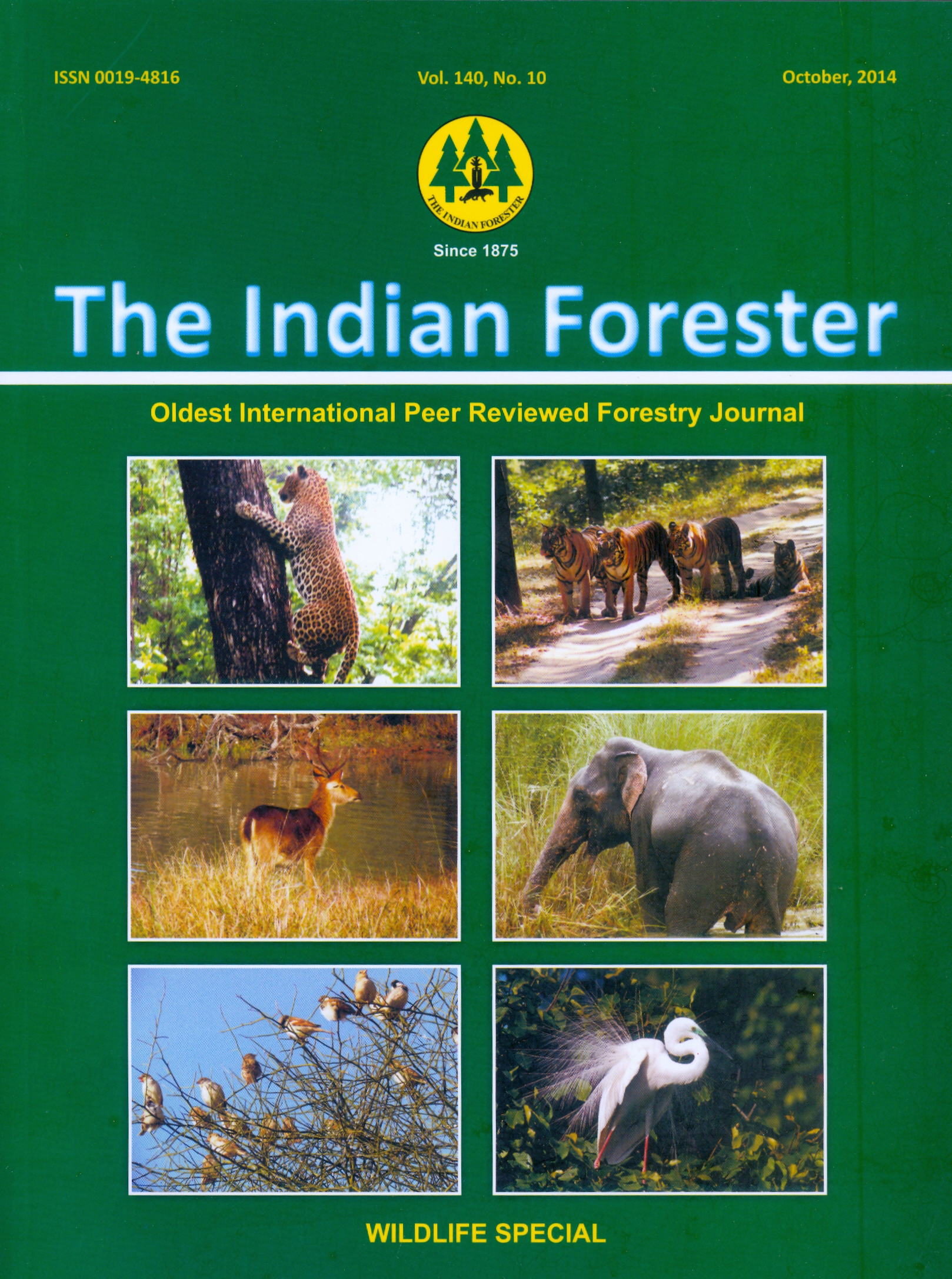Man-wild Animal Conflicts in Jammu and Kashmir : A Critical Review
DOI:
https://doi.org/10.36808/if/2014/v140i10/53474Keywords:
Wild Animals, Conflicts, Black Bear, Common Leopard, Snow Leopard, MFPS Collection, Human Settlements.Abstract
Conflicts between man-wild animals are a serious problem across the region. Black bear, common leopard, snow leopard and monkeys are generally found to involve in man-wild animals conflicts. The study reveals that women/men working in fields venture into the forests for grazing their animals, collection of MFPs and collection of firewood and fodder are the main targets for the wild animals. It is observed that the frequency of attack is governed by the time intervals (morning, afternoon, evening and night) and seasons (summer, autumn and winter) and even on the sex groups of human beings with age. The study on ageand sex composition of victims reveals that the maximum numbers of victims were found between the age group of 18 to 40 years. Wild animals attack livestock and damage crops thus proving the damage to economic loss for the inhabitants of the region. The results show that leopard and black bear have the ability to adapt any place and habitat for attacking human lives. The study indicates that human settlements are either in or around the forests results in the conflicts with wild animals. It is further found that number of conflict cases increases as the distance from water sources decreases with human establishments. The study also suggests some of the measures that may prove milestone in controlling the man-wildlife conflicts in the region include strengthening of the Forest and wildlife Department; professionalism in wildlife management to be enhance through capacity building and awareness; involvement of the civil society including state universities, government departments, NGOs, local communities and youth particularly the students.References
Anon. (2007). Investigation on human-leopard conflict in Jammu and Kashmir TechnicalReport, 3, 2007.
GOI (2011). Census of India (2011), Ministry of Home, Govt. of India, New Delhi.
Karanth K.U. and Gopal R. (2005). An ecology-based policy framework for human-tiger co-existence in India. In: People and Wildlife: Conflict or Coexistence ( Ed. By: R. Woodroffe, S. Thirgood and A. Robinowitz), Cambridge, UK: Cambridge University Press, pp. 373-387.
Thirgood S., Woodroffe R. and Rabinowitz A. (2005). The impact of human-wildlife on human lives and livelihoods. In: People and Wildlife:Conflict or Coexistence (Ed. by: R. Woodroffe, S. Thirgood and A. Robinowitz) Cambridge, UK: Cambridge University Press, pp. 13-26.
Woodroffe R., Thirgood S. and Rabinowitz A. (2005). The future of coexistence: resolving human-wildlife conflicts in a changing world. In: People and Wildlife: Conflict or Coexistence (Ed. by: R. Woodroffe, S. Thirgood and A. Robinowitz) Cambridge, UK: Cambridge University Press, pp. 388-405.
Downloads
Downloads
How to Cite
Issue
Section
License
Unless otherwise stated, copyright or similar rights in all materials presented on the site, including graphical images, are owned by Indian Forester.





